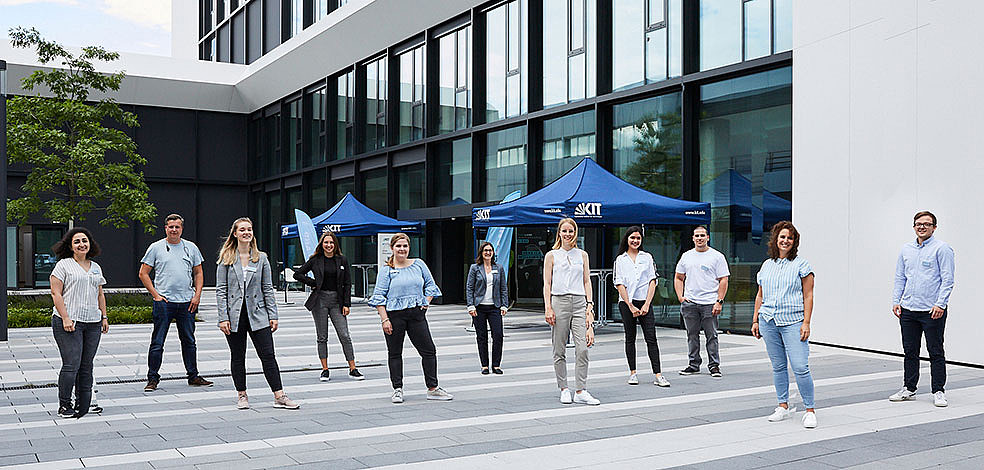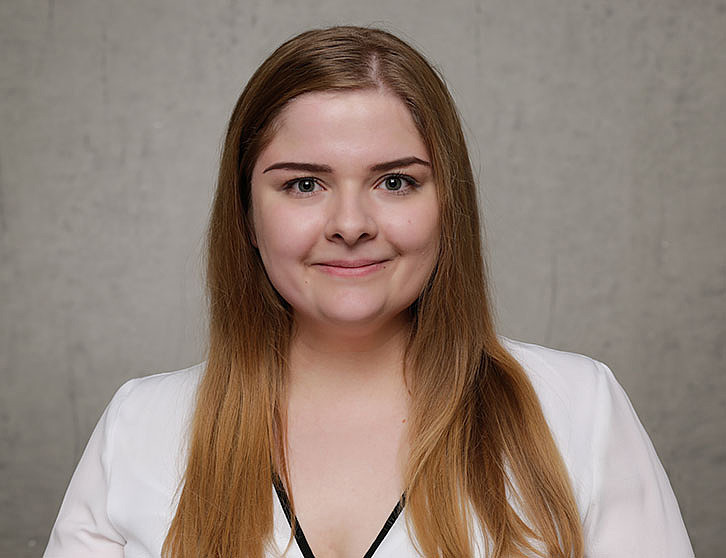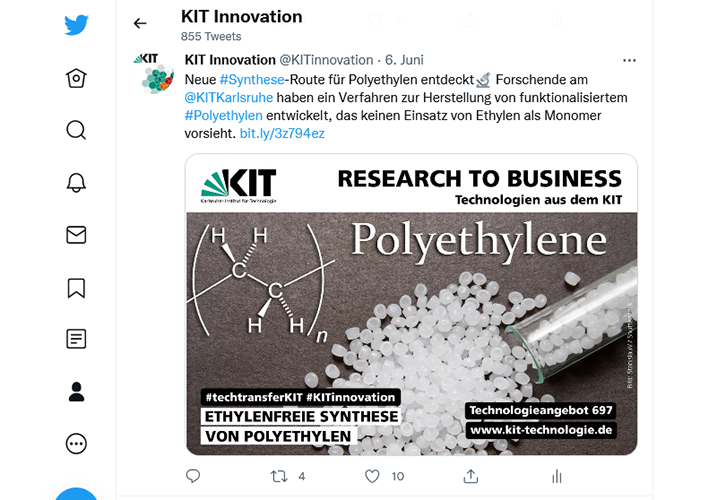Published on June 22, 2022
Professions in technology transfer: Social media manager
How do you become a social media manager? How did you come to this profession?
Vanessa Heinz: I developed a passion for media work at a very early age. That's why I studied journalism at Johannes Gutenberg University in Mainz. During my studies, I focused on activities in the business world. When I heard about the job in technology marketing at KIT, I was immediately interested and applied for the position. Since 2021, I have now been in charge of the social media channels for technology marketing and especially for technology exploitation.
Why did you choose a career in technology transfer?
Vanessa Heinz: It was not a conscious decision, but rather due to chance. I had previously worked in a traditional commercial enterprise. Technology transfer was not consciously on my radar as a possible field of work. However, when I discovered the job posting, the interface between business and science aroused great curiosity in me.
Although the tasks and activities are similar, there are differences when working in transfer. Basic things differ, such as having different contact persons than in B2C communications. While a pure business company is largely revenue-driven, there is a different perspective on the business world in technology transfer. At KIT, not only pure commercialization is considered, but also technological progress and its relevance for society is important. Generation of new knowledge, problem solving and further development come before profit making at KIT.
What are the requirements of the profession? What should you bring with you?
Vanessa Heinz: For the job, you need trained media skills, i.e., either to deal a lot with social media, or at least to be able to communicate the enthusiasm of the topics to be promoted to the outside world. The most important thing is to be as adaptable and dynamic as the social media world. The interests of consumers, including stakeholders, fluctuate quickly and the flood of information must be processed and "portioned."
As a social media expert, I need good responsiveness, for example in filtering content or responding to comments. Content needs to be well organized and adaptable. Above all, it's about getting into direct contact with people. Here it is important to be able to deal with positive and negative feedback. This requires a lot of sensitivity and zeitgeist when implementing content.
Following the model of "gatekeeping", i.e. the selective process of publishing according to relevance for consumers, we are keen to present a unified image as KIT and to be the first point of contact for people interested in technology from industry and society.
What does a typical day look like for you?
Vanessa Heinz: In general, work in the social media area is very unpredictable. A typical day of mine could be roughly summarized like this: First, consulting the internal editorial plan, planning posts - according to the relevance of the current day, editing current topics and assigning actions according to, for example, the most effective times. In addition, I exchange a lot of information with other people from my own as well as neighboring departments, since I usually do not generate topics suitable for publication myself. I need more detailed information about, for example, the intended message, as well as photos and links from others as rough key data.
It's also part of the job to go through our platform newsfeeds every day: Reposting content from partners, liking and engaging in interpersonal exchange. That's part of community management, which is also an integral part of my job. Of course, success monitoring also plays a major role in social media. The success of our measures is monitored regularly. This is done in a monthly key performance indicator report, which is discussed within the team. These key figures give us valuable feedback on the effectiveness of our social media communication.
Basically, I still have to mention that I am not 100 percent social media manager. I am also involved in other projects and editorial tasks in technology marketing. I take intensive care of our video productions or write articles for our magazines and blogs. I also regularly help out with quality assurance and editing.
Why does KIT need social media managers?
Vanessa Heinz: Communication work has changed a great deal. It is no longer possible to avoid social media - at least if reach is a criterion. As a large research university, KIT faces countless stakeholders. It is a balancing act to communicate with all of them in a targeted manner and to get them excited about the various topics at KIT.
In technology transfer, we target a niche of these wide-ranging target groups. We have to address them specifically and win them over for our transfer offers. Externally, there are many stakeholders such as society, interested companies, but also employees and researchers who become relevant for our cooperation. So you have to think carefully about which topics will resonate with the target people. The more relevant and interactive the posting behavior is, the more likely you are to be noticed in the channels. We want to reach exactly the people we ourselves have determined as our target group, and that is often underestimated.
What do you like about your job?
Vanessa Heinz: What I like about my work at KIT is that my job is very varied. It is a daily surprise, so to speak, which topics I deal with. I sort through a lot of new information and keep my finger on the pulse. I am also always happy about positive feedback on my posts. We reach people who are also interested in the topic of transfer; that moves us forward. I realized early on that I was interested in writing and I can apply that to my job. My challenge is always to convey information as briefly and concisely as possible because platforms like Twitter only allow a limited number of characters.
„Breaking down technical information for the general public to the most important, yet appealing, is my daily challenge. In doing so, I come into contact with new, exciting topics every day, which makes my job very varied.“
Vanessa Heinz
Feel free to follow us on our channels. Since we have been working more and more with videos since last year, we also have a Youtube channel. Follow us, subscribe to our channels or link us. We would like to get in touch with you about scientific topics and technology transfer at KIT.




Write a comment